|
JESUIT
INSTITUTIONS
IN
HUNGARY
page
2 of 2
|
|
The
College at Coronation Church, Budapest
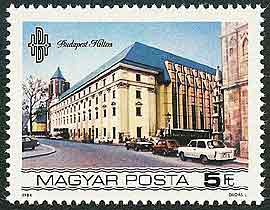
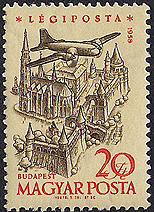
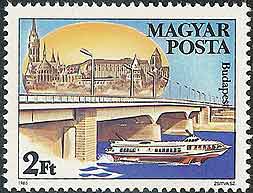
HUNGARY, 1984, the college for which Coronation
Church was the collegiate church is now a Hilton hotel, Scott 2867
1958, college is seen beneath the plane's right engine, Scott C200
1985, college and church both visible above the bridge, Scott 2904
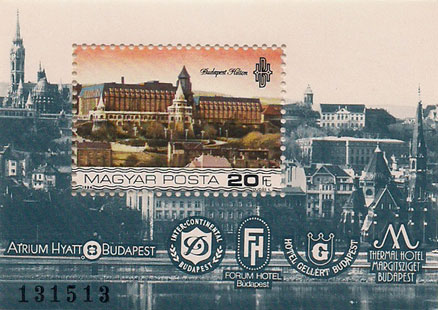
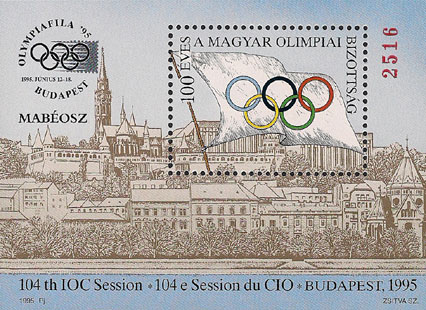
HUNGARY, 1984, souvenir sheet with church
& college, Scott 2869
HUNGARY, 1995 and 1998, Olympics souvenir sheet
with church & college, overprinted in 1998 "Olympiafila Budapest - 98"
The
Parish of Pest-Belvaros, Budapest
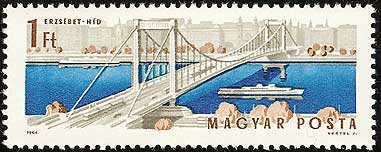

HUNGARY, 1964, Scott 1622
On the east side of the river and next to the bridge
is the oldest monument in Pest, the
parish church of Pest-Belvaros (the inner city church which is named
for Our Lady ), seen in the panoramic landscapes earlier in this section
on Hungary and the two towers of which are faintly visible on this stamp
(see detail). Built in 1046, it was destroyed during the Mongol invasion,
then rebuilt first in a Romanesque and in the 15th century in Gothic style.
During the Turk occupation it became a mosque, the
mihrab can still be seen there. The church passed to the Jesuits in
1702. The Society rebuild the church between 1725 and 1740 in Baroque
style. It was here that St. Elizabeth of Hungary was betrothed in 1211,
here that Cardinal Peter Pazmany is buried, and that Franz Liszt conducted
many of his own works. As the Elizabeth Bridge was being built there were
plans to tear the church down; fortunately the plans were scrapped and
the bridge now passes just a few feet from the church.
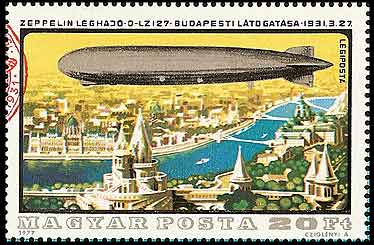

This stamp appears on the two zeppelin souvenir
sheets below.
Its twin towers are on the far side, between the two
suspension bridges (see detail).
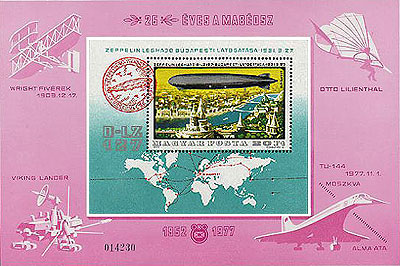
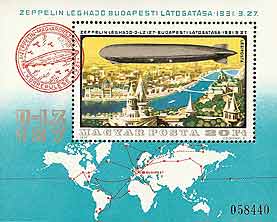
HUNGARY, 1977, Scott C392 (right). Both these sheets also exist imperforate
The
University of Budapest


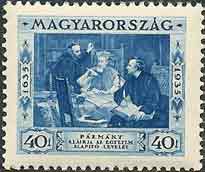
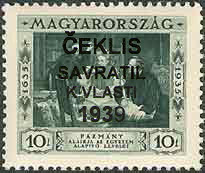
HUNGARY, 1935, the tercentenary of the founding of the university,
Scott 492-497
HUNGARY, 1939, local overprint for the 1939 occupation
Cardinal Peter Pazmany founded a Jesuit university
in 1635, the first faculty of which was the Faculty of Theology. There
is some confusion about the name of the school. It was founded in Nagyszombat
(now Trnava, Slovakia), and so Czechoslovakia honors it as the University
of Trnava. At the Suppression in 1773 it passed out of Jesuit hands
and moved in 1777 to Buda to become the University of Buda. In 1784 it
moved across the Danube and became the University of Pest. From 1921 until
1950 this University of Budapest was known as Peter Pazmany University.
In 1950 it was renamed Eötvös
Loránd University. In 1950 the original theology faculty separated
from the university and, having become a full university itself in 1992,
lays claims to the heritage of Cardinal Pazmany by calling itself Peter
Pazmany Catholic University. Pázmány's image by Hans
Temple shows him between two other Jesuits signing the document that founded
the university.
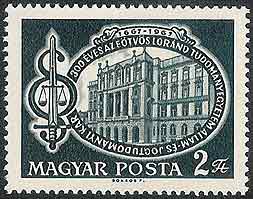
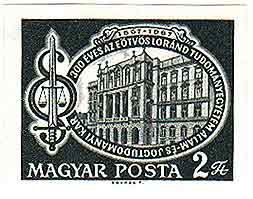
HUNGARY, 1967, the 300th anniversary of the Faculty of Law, perf &
imperf, Scott 1857

HUNGARY, 1971, a set of eight flowers for the bicentenary of the
Botanical Garden of the University of Budapest, Scott 2089-96
The lowest value portrays Jakab József Winterl (1739-1809), author
of Index horti botanici Universitatis Hungaricae: quae Pestini est [Index of the Botanical Garden of the University of Hungary at Budapest] who
is not known to have been a Jesuit.
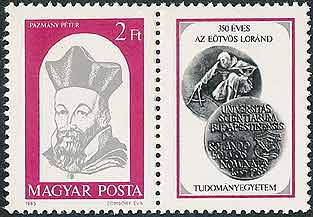
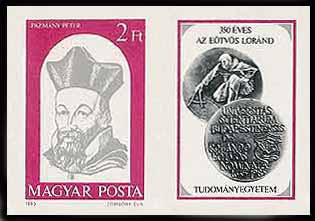
HUNGARY, 1985, 350th anniversary of Eötvös Loránd
University as it is now called, perf & imperf, Scott 2917
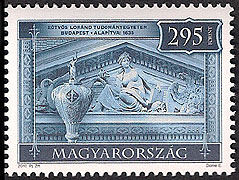
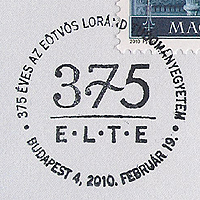
HUNGARY, 2010, the 375th anniversary of the ELTE (Eötvös Loránd
Tudományegyetem), and its FDI cancel,
featuring the rector's scepter and the pediment of the Faculty of Arts building,
Scott 4148
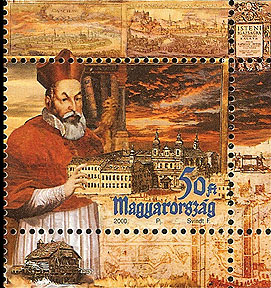
HUNGARY, 2000, a se-tenant strip of the
history of Hungary includes Pazmany holding the future University of Budapest,
Scott 3724e
The
Jesuit Church and Residence, Esztergom
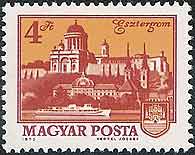
HUNGARY,
1973, Scott 2199
Esztergom lies about 30 miles northwest of Budapest. This stamp shows
the primatial basilica above and under it nearer the Danube the old Jesuit
residence which became first the palace of the archbishop primate, and
later two museums. To its right may be seen a church that also belonged
to the Society.
The
Jesuit School at Gyöngyös
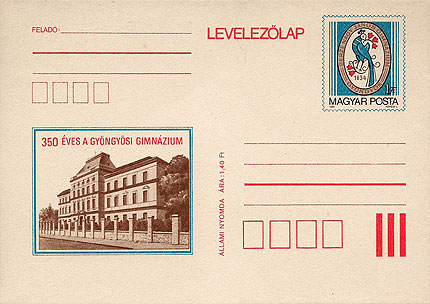
HUNGARY, 1984, the 350th anniversary of the school, Hungarian Catalog
#370
The Jesuit school in Gyöngyös, Hungary, today known as the
János Berze-Nagy Secondary Grammar School, one of the oldest such
school in the country was founded in the times of the Turkish occupation,
in 1634. The Jesuit provincial sent for two priests who were acknowledged
teachers and scientists to establish the grammar school and start teaching
according to the principles of the Jesuit Order. The Jesuits—with small
forced intervals—ran the school the Suppression in 1773. From 1776—at the request of the town authorities—the Franciscan order took over
the school and taught here for 122 years. By the end of the 19th century
the Franciscans could no longer finance the continuously increasing institution
and it was given over to the State. The six-form grammar school was expanded
and a more scholarly, eighth-form institution was created. The new—and
presently visible—building of the grammar school began to be used in
September of 1899. It was a landmark building of modern school architecture
of the age.
The
Jesuit Church, Pécs
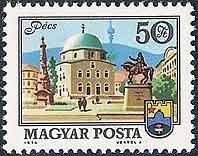
HUNGARY, 1974, Scott 2335
This unusual building stands at the top of the main square of Pécs
in southWestern Hungary near the Croatian border. During the Middle Ages,
the spot was occupied by a large triple-aisled Gothic church named in
honor of St. Bertalan. The Turks, who occupied Pécs in 1543, destroyed
the church and used its stones in 1548-1551 to build the mosque of Pasha
Gazi Kassim, the largest in Hungary. The Turks were completely expelled
from Hungary by 1699, and the mosque was taken over by the Jesuits who
added a chapel and sacristy, tore down the Turkish entry and minaret,
and turned it back into a Catholic church where they served until the
Suppression in 1773. It is still a Catholic church, the Inner City Parish
Church, despite its exotic shape, two prayer niches facing Mecca, and
atop its cupola an ecumenical symbol: a cross rising above the Turkish
crescent moon.
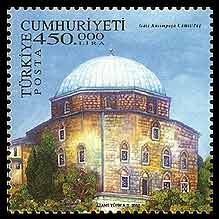
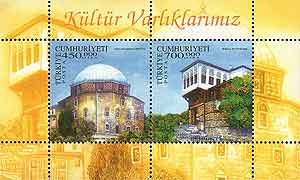
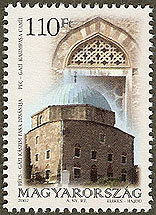
TURKEY, 2002, Our Cultural Heritage, a joint issue of Turkey and Hungary,
Scott 2844
HUNGARY, 2002, also showing the domed church at Pécs, Scott
3820

HUNGARY, 2005, Pécs selected as a Cultural Capital of Europe for 2010
(also exists imperf)
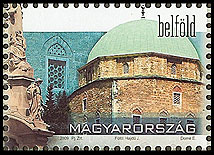
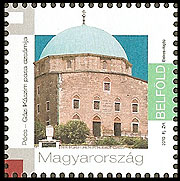
HUNGARY, 2009, personalizable stamps of Pécs (see sheet below),
Scott 4135q
HUNGARY, 2010, Pécs named a European Capital of Culture (see sheet
below), Scott 4145o
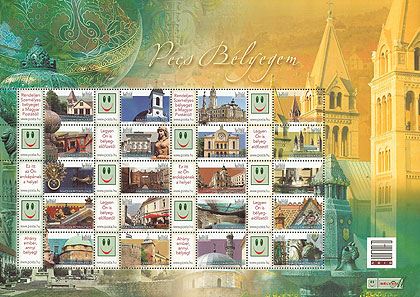
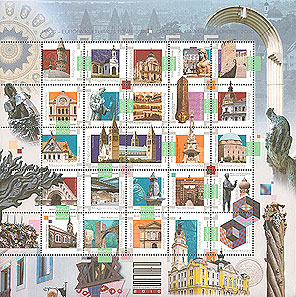
HUNGARY, 2009, personalizable stamps of Pécs (sheet reduced
to half size) with the church at the bottom left, Scott 4135
HUNGARY, 2010, a sheet of 25 stamps commemorating Pécs being
named a European Capital of Culture, Scott 4145
Instead of a denomination the word belföld (inland) indicates for inland use only. The church is the center stamp in the right-most column.
Jesuit
Church and School, Székesfehérvár
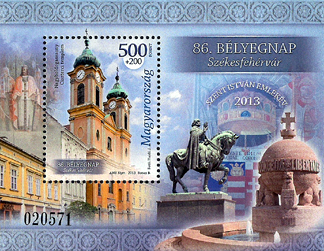
HUNGARY, 2013, Scott 4281
Until the Ottoman rule, Fehérvár was the sacral center
of the Hungarian Kingdom: it served as a venue for coronations and a place
of burial for Hungarian kings. The city was occupied by the Ottomans in
1543 and remained under their rule until 1688. After the occupation, the
Jesuit Order, which settled in Fehérvár in 1688, was the
driving force behind the re-introduction of Christianity in the city.
The Jesuits built their church dedicated to St. John of Nepomuk, residence
and school on the site of the former Church of St. Jacob, which had been
turned into a mosque by the Turks. Jesuit brothers played an important
role in the design, art work, financing and completion of the church.
The building of the complex began in 1742 and the consecration of the
church took place in 1756. Following dissolution of the Jesuit Order,
the buildings were used by the Paulines between 1773 and 1786, and
by the Cistercians from 1813 to 1950. After that the church fell under
the control of the diocese, and the monastery became the location of the
King St. Stephen Museum.


































